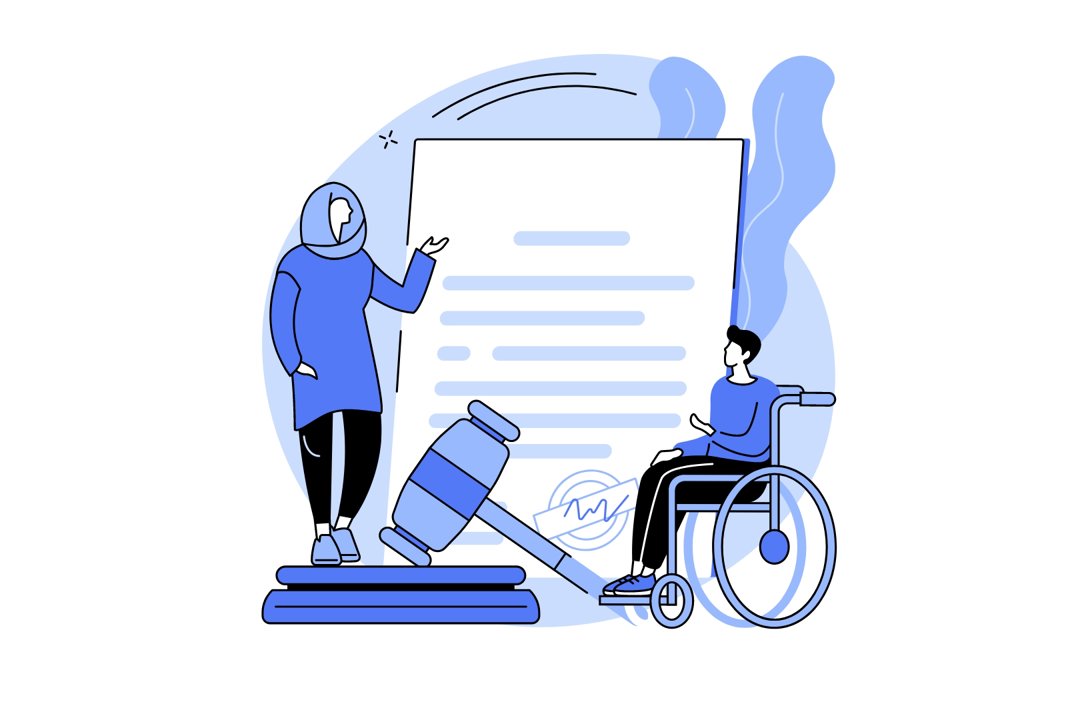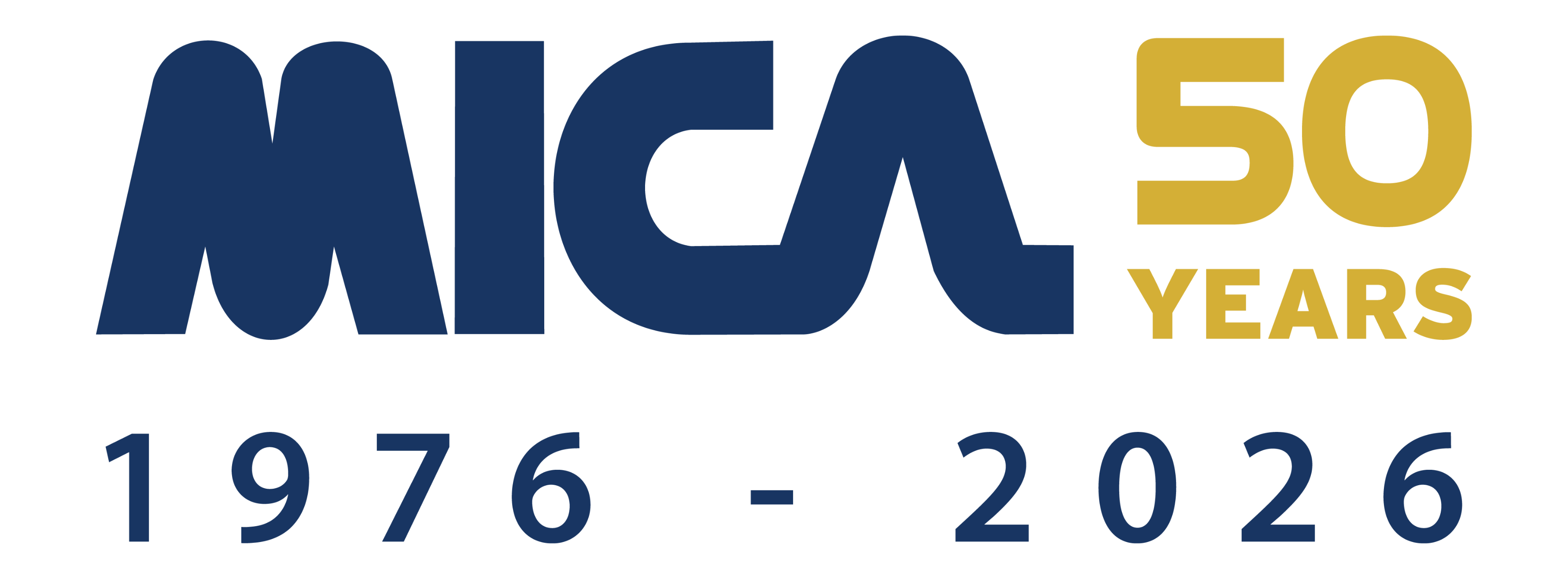
- Compliance
New Regulations Focus on Anti-Discrimination in Health Care
The new Rule requirements include developing new policies and procedures, educating staff, and posting and distributing anti-discrimination notices.
A new final rule (Rule) published by the U.S. Department of Health and Human Services (HHS) Office of Civil Rights (OCR) focuses on anti-discrimination in health care. The Rule mandates that medical practices and other health care providers implement procedures to promote equal access to care for patients and their companions1 with limited English proficiency (LEP) and disabilities. Requirements include developing new policies and procedures, educating staff, and posting and distributing anti-discrimination notices.
The regulations take effect July 5, 2024, with compliance deadlines staggered throughout 2024 and 2025. The Rule’s requirements apply to physicians, advanced practice providers, and their practices if they receive federal financial assistance from HHS, including payments from Medicare, Medicaid, or CHIP.
To protect your practice from HHS enforcement actions, board complaints, and lawsuits alleging non-compliance with the new requirements, read on to learn what you need to do and when.
What is the New Rule?
The new Rule implements section 1557 of the Affordable Care Act (ACA). Section 1557 contains anti-discrimination protections for individuals with LEP and disabilities. For example, Section 1557 makes it unlawful for physician practices and other providers that receive federal financial assistance from HHS to refuse to treat an individual based on race, color, national origin, sex, age, or disability.2 The new Rule interprets “sex” to include sexual orientation and gender identity, consistent with the U.S. Supreme Court decision in Bostock v. Clayton County.
Although section 1557 is not new, OCR has used rulemaking authority to interpret it differently over the years. This final 2024 version replaces a previous 2020 Rule issued by OCR under the Trump Administration. According to OCR, the 2024 Rule strengthens individual civil rights protections.
The Rule applies to health programs and activities, including physician practices, that receive federal financial assistance from HHS. Federal financial assistance includes payments received from HHS-administered programs such as Medicare, Medicaid, and CHIP, or from HHS in the form of a grant, loan, credit, subsidy, contract, or other arrangement.3 The Rule also applies to HHS-administered programs and activities and the health insurance Marketplace.
Practices subject to section 1557 need to understand the regulations and OCR’s timeline for compliance. To help you get started, in this article MICA summarizes the Rule’s most significant requirements and lists the compliance deadlines.
Compliance When Your Practice Only Receives Medicare Part B
For many years, OCR interpreted federal financial assistance to include payments from Medicaid, CHIP, and all Medicare Parts other than Part B. OCR has changed this interpretation with the new Rule: federal financial assistance now includes payments from Medicare Part B.
OCR recognizes that practices and other health care entities that ONLY receive Part B payments were not previously required to comply with the anti-discrimination provisions of section 1557. Therefore, OCR is allowing a grace period for these entities to achieve compliance. If the only form of federal financial assistance your practice receives is Medicare Part B payments, the deadline for compliance with each of the Rule’s requirements summarized below is May 6, 2025.4
Appoint a Section 1557 Coordinator
On or before November 1, 2024, a practice subject to the Rule must appoint a Section 1557 Coordinator if the practice employs 15 or more individuals.5 This individual is generally responsible for coordinating the organization’s compliance with section 1557 regulations. At a minimum, the Coordinator must:
- Coordinate implementation of language access procedures;
- Coordinate implementation of procedures for effective communication and reasonable modifications for individuals with disabilities;
- Coordinate training on section 1557 requirements and policies and procedures for relevant practice employees;
- Maintain training documentation according to the Rule’s requirements;
- Coordinate compliance with the Rule’s recordkeeping requirements; and
- Comply with grievance procedure requirements to receive, review, and process grievances filed by patients and companions.
As appropriate, a practice may designate several employees to assist the Coordinator in carrying out these duties. However, the Coordinator must retain ultimate oversight for directing the organization’s compliance with section 1557 requirements.
Distribute Notices of Nondiscrimination
On or before November 1, 2024, practices subject to the Rule must begin posting and distributing Notices of Nondiscrimination.6 The Notice alerts patients, potential patients, patient representatives and companions, and the public that the practice:
- Does not discriminate;
- Provides reasonable modifications and appropriate auxiliary aids and services to individuals with disabilities; and
- Provides language assistance services when necessary to ensure meaningful access to care.
The notice also tells individuals how to:
- Access these services;
- File a discrimination complaint with OCR;
- File a grievance with the practice and how to contact the practice’s Section 1557 Coordinator (if practice has more than 15 employees); and
- Access the practice’s website (if it has one) where the Notice must also be posted.
To encourage compliance and save you time, HHS offers model Notices in English and 47 languages. MICA recommends that practices access the HHS resources page and utilize these customizable model Notices. Practices must add practice-specific information to these model Notices before posting and distributing.
The Notice of Nondiscrimination must be posted and distributed as follows:
- Distribute annually to patients.
- Provide copies on request to patients, visitors, and others.
- Post notices in no smaller than 20-point sans serif font in “clear and prominent” physical locations throughout the practice – consider waiting areas, check-in/check-out areas, and exam rooms and treatment areas.
- Post in a conspicuous location on the practice’s website (if it has one).
Distribute Notices of Availability of Language Assistance Services and Auxiliary Aids and Services
On or before July 3, 2025, practices subject to the Rule must also post and distribute Notices advising patients, potential patients, and their companions that language assistance services and appropriate auxiliary aids are available free of charge when necessary to comply with section 1557 anti-discrimination requirements.7
The Notice must be provided in English and the 15 languages most commonly spoken by individuals with LEP in the state(s) where your practice operates. Practices can use the state-by-state list of top languages published by CMS. The practice must also make the Notice available in alternative formats when necessary for effective communication with individuals with disabilities who require auxiliary aids and services.
To make compliance easier, HHS offers model Notices in English and 47 languages. MICA recommends that practices utilize these customizable model Notices available on the HHS resources page. Practices must add practice-specific information to these model Notices before posting and distributing.
The Notice must be posted or distributed utilizing various methods as follows:
- Provide to patients annually.
- Provide to anyone who requests a copy.
- Post in a conspicuous location on the practice website (if any).
- Post notices in no smaller than 20-point sans serif font in “clear and prominent” physical locations throughout the practice – consider waiting areas, check-in/check-out areas, and exam rooms and treatment areas.
In addition, entities subject to the Rule must incorporate the Notice into various electronic or written communications they provide to individuals. For medical practices and other health care organizations, following is a list of forms commonly provided to patients that must contain the Notice:
- Notice of Privacy Practices;
- Consent forms;
- Instructions related to procedures or surgeries;
- Discharge paperwork;
- Application/intake forms;
- Complaint forms; and
- Communications related to the cost of and payment for care, including billing or collections statements and correspondence and good faith estimates required by the No Surprises (Billing) Act.
Practices may develop a procedure that allows patients to opt out of receiving the Language Access and Auxiliary Aids and Services Notice after the first year. An opt-out notice must:
- Be delivered annually in a patient’s primary language or through appropriate auxiliary aids and services;
- Inform patients of their right to receive the notice upon request in their primary language or via appropriate auxiliary aids and services; and
- Inform patients that if they opt out, they still have a right to language assistance services and appropriate auxiliary aids and services as required by law.
Opt-out notices must not condition continued care on opting out. Practices are prohibited from treating a non-response as a decision to opt out and must document annually when an individual opts out of receiving the Language Assistance and Auxiliary Aids and Services Notice.
Develop and Implement a Nondiscrimination Policy
Practices subject to the Rule must implement a written nondiscrimination policy (with an effective date) that, at a minimum, includes the following statements or information:
- The practice does not discriminate on the basis of race, color, national origin (including LEP and primary language), sex, age, or disability.
- The practice provides language assistance services and appropriate auxiliary aids and services free of charge when necessary for meaningful access by individuals with LEP and effective communication with individuals with disabilities.
- The practice will provide reasonable modifications for individuals with disabilities.
- If the practice has 15 or more employees, the policy must list current contact information for its Section 1557 Coordinator.8
The Rule recognizes that nondiscrimination policies may differ based on a health care organization’s size and complexity. In other words, a large hospital system in New York City that encounters a wider range of patients and has greater resources will have a different policy than a solo physician practice in rural Arizona.
Develop and Implement a Language Access Policy and Procedure
Practices subject to the Rule must implement a written language access policy with an effective date that describes how the practice will provide language assistance services to patients and their companions with LEP when reasonable and necessary. At a minimum, the Rule requires the following information in the policy:
- Contact information for the Section 1557 coordinator (if the practice has 15 or more employees);
- Process staff will follow to identify whether a patient or patient companion has LEP;
- Process staff will follow to coordinate and schedule interpreter or translator services necessary to communicate effectively with the patient or patient companion;
- Names of any “qualified bilingual staff” that may be used to translate or interpret; and
- List of electronic or written translated documents the practice maintains – including the date of issuance, languages available, and how to access.9
For more detail about these requirements and recommendations regarding development of language access procedures, read MICA’s Developing a Language Access Plan.
Develop and Implement an Effective Communication Policy and Procedure
Practices subject to the Rule must implement a written policy and procedure with an effective date that describes how the practice will ensure effective communication for patients and their companions with disabilities. The policy and procedure must contain at least the following information:
- Contact information for the Section 1557 Coordinator if the practice has 15 or more employees;
- Process staff will follow to coordinate and schedule a qualified interpreter when necessary to communicate effectively with a patient or patient companion with disabilities;
- Names of any qualified interpreter staff members; and
- Process staff will use to access appropriate auxiliary aids and services.10
Federal regulations define a “qualified interpreter for an individual with a disability”11 to mean an interpreter who, via a video remote interpreting service (VRI) or an on-site appearance:
- Has demonstrated proficiency in communicating in, and understanding both English and a non-English language (including American Sign Language, other sign languages) or another communication modality (such as cued-language transliterators or oral transliteration);
- Interprets effectively, accurately, and impartially, both receptively and expressively, using any necessary specialized vocabulary or terms without changes, omissions, or additions and while preserving the tone, sentiment, and emotional level of the original statement; and
- Adheres to generally accepted interpreter ethics principles including client confidentiality.
MICA has developed a sample policy template that practices can use as a starting point when developing a policy and procedure for effective communication with patients with disabilities.
Develop and Implement a Reasonable Modifications Policy and Procedure
Practices subject to the Rule must implement a written policy and procedure with an effective date describing the practice’s process for making reasonable modifications to policies or procedures when necessary to avoid discrimination based on an individual’s disability. At a minimum, this policy must include the following information:
- Contact information for the Section 1557 Coordinator (if the practice has 15 or more employees);
- Process for employees to follow when responding to an individual with a disability who requests changes, exceptions, or adjustments to a practice rule, policy, or service;
- Process staff will use to determine whether granting the request for modification would “fundamentally alter” the nature of the care or service provided (which may legally support a denial of the request);
- Process staff will follow to identify an alternative modification that would not “fundamentally alter” the services provided but would ensure the individual is able to receive care.12
Before denying a request for modification, MICA recommends consulting an attorney for a legal opinion about whether your circumstances would constitute a “fundamental alteration.”
Compliance Deadline for Policies and Procedures
Although HHS has published FAQs saying that practices have until July 5, 2025 to develop policies and procedures, HHS and the training regulations say all training must be completed, at the latest, by May 1, 2025 (300 days after the Rule’s July 5, 2025 effective date).13 To ensure compliance, practices should implement policies and procedures no later than April 1, 2025 to allow time for training.
Train Staff
Practices subject to the Rule must provide training for “relevant” staff within 30 days of implementing each of the policies procedures described above.14 According to HHS, training must be completed, at the latest, by May 1, 2025 (300 days after Rule’s effective date). The Rule defines “relevant” as permanent and temporary employees who:
- Interact with patients or the public;
- Make decisions that directly or indirectly affect patient care;
- Perform tasks or make decisions that directly or indirectly affect patients’ financial obligations.15
The Rule specifically states that “relevant” employees include the practice’s executive leadership team and legal counsel as well as billing and collection staff.16 Based on HHS’ broad definition of “relevant,” practices that want to ensure compliance should consider training all clinical and non-clinical staff on section 1557 policies and procedures.
Training requirements include:
- Provide “relevant employees” with appropriate and necessary information that enables them to carry out their duties under the policies and procedures.17
- When new “relevant” employees join the practice, training must be provided within a “reasonable time” after their start date.18
- Training must be provided whenever changes are made to the policies and procedures that impact “relevant” employees’ job functions under those policies;19
- The practice must document training when the employee completes it. Creating records weeks or months after completion of training is insufficient. Retain employee training records for at least 3 calendar years.20
In addition, practices should consider retaining copies of training curriculums, written materials distributed during training, and power points and other electronic presentation materials. While this is not required by the Rule, these documents will be critical to defend any lawsuit, complaint, or enforcement action alleging inadequate training.
Other Provisions
The Rule also requires practices to:
- Make reasonable efforts to mitigate the risk of discrimination when using patient care decision support tools such as AI or clinical algorithms beginning May 1, 2025;21 and
- Ensure that any telehealth services provided are accessible to individuals with disabilities and LEP by July 5, 2024.22
Final Takeaways
Physicians, APPs, and practice staff often feel overwhelmed by a seemingly endless list of regulatory responsibilities. Instead of viewing these new regulations as an administrative burden, consider the benefits: Effective communication with patients and companions promotes good outcomes and fosters trust and rapport.
By contrast, miscommunication due to language barriers can result in diagnostic errors, delayed treatment, or inadequate informed consent. An analysis of over 20,000 closed claims nationwide found that communication was a factor in 30% of the cases and over half of those involved clinician-patient miscommunication.23 Language barriers were a common factor in these failed communications, particularly in obstetrics or surgery.24
Optimizing communication with patients with LEP or disabilities reduces these risks, enhances the clinician-patient relationship, potentially improves your practice’s online reputation, and may drive new business your way. That means everyone benefits.
[1] Federal regulations define “companion” to mean a family member, friend, or associate of an individual seeking access to health care services, who along with such individual, is an appropriate person with whom a covered entity should communicate. 45 CFR § 92.4
[2] 45 CFR § 92.1
[3] Id. at § 92.4
[4] https://www.federalregister.gov/documents/2024/05/06/2024-08711/nondiscrimination-in-health-programs-and-activities
[5] Id. at § 92.7
[6] Id. at § 92.10
[7] Id. at § 92.11
[8] Id. at § 92.8(b)(1)
[9] Id. at § 92.8(d)
[10] Id. at § 92.8(e)
[11] Id. at § 92.4
[12] Id. at § 92.8(f)
[13] Id. at § 92.9(b)(1)
[14] Id. at § 92.9(b)(1)
[15] Id. at § 92.9(b)(4)
[16] Id. at § 92.9(b)(4)
[17] Id. at § 92.9(a)
[18] Id. at § 92.9(b)(2)
[19] Id. at § 92.9(b)(3)
[20] Id. at § 92.9(c)
[21] Id. at § 92.210 & § 92.1(b)
[22] Id. at § 92.211 & § 92.1(b)
[23] Crico Strategies, Malpractice Risks in Communication Failures, 2015 Benchmarking Report
[24] Id.


